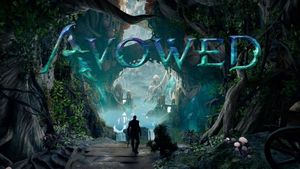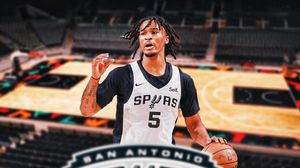Fans of the legendary secret agent James Bond have long debated the merits of the films from different eras, particularly the 1980s, which showcased two distinct portrayals under the scrutiny of audiences. While Roger Moore's suave and light-hearted take on 007 dominated this decade, the advent of Timothy Dalton brought about significant shifts, making the 007 legacy ripe for retrospective appreciation.
Roger Moore's tenure as James Bond is often remembered for his iconic performances and entertaining escapades, leading to films like Moonraker (1979) setting box office records and maintaining the franchise's stellar reputation. The success of these films was reflected across the decade, with Moore's 'lighter' portrayal providing years of enjoyment to fans. His style, often marked by witticism and charm, paved the way for some of the most memorable 007 moments, even as critics initially dismissed his approach as less serious.
Among the richly varied entries of the '80s Bond films, For Your Eyes Only (1981) stands out. Directed by John Glen, this film saw Moore return to grittier storytelling after the extravagant spectacle of Moonraker. The film received considerable esteem from the audience, highlighting the effectiveness of Moore's adaptation of Ian Fleming’s narratives, albeit with mixed visual execution. The character of Melina Havelock, played by Carole Bouquet, is often lauded as one of the franchise's most compelling Bond Girls.
Another notable film from this era is The Living Daylights (1987), marking Timothy Dalton's debut as the new Bond, shifting the franchise's tone back toward the dark, espionage-themed roots of the original novels. Critics observed this film as more faithful to Fleming's writings and packed with engaging action sequences, like the innovative stunt work and the tension-filled romance between Bond and the character Kara, played by Maryam d'Abo.
Yet, with 1983 bringing forth two competing Bonds—Moore’s Octopussy and Connery’s Never Say Never Again—the fanbase was forced to reckon with their allegiances. The waters were muddied as two interpretations of Bond were released simultaneously, igniting fervent debate among fans about who embodied the quintessential secret agent. This duel not only showcased two different styles but also emphasized the transition of the franchise during the decade.
Interestingly, Connery’s film was born out of legal tussles related to the original Thunderball storyline, which resulted from Kevin McClory's separate rights to the material. The return of Connery after over 12 years allowed audiences nostalgic for the original 007 to rediscover the iconic actor, even as the film itself received mixed reviews. According to reports, Never Say Never Again was seen as less of an artistic endeavor compared to its Eon counterpart, leading to both films garnering their unique fan bases.
Despite the nostalgic draw of Connery, it was Moore's Octopussy (1983) which managed to pull greater box office returns, achieving $187 million globally compared to Connery’s $160 million. This reflected audience preference leaning toward the classic staples of Bond, showcasing action, exciting locations, and clever humor which defined Moore's era.
While Octopussy thrived on the quintessential Bond experience, Licence to Kill (1989) marked yet another pivotal moment within the franchise. Positioned as Dalton's final film and with the previous lighter tone dropped for something darker and more matter-of-factly thrilling, it paved the way for renewed appreciation for the gritty undertones of espionage. The film's chase sequences and complex character arcs continued to engage the audience, and over time, this darker drama found its footing among fans.
While opinions on these films frequently vary, the essence of the debate often points to personal preferences among viewers. For some, Moore will always embody the charm of Bond, bringing with it nostalgia and laughter, whilst others, drawn to Dalton's intensity, argue for the seriousness associated with his portrayal as reflective of the changing political and cultural landscapes of the time.
Today's fans remain divided; many admire the lighter, humorous episodes under Moore's stewardship, whereas others appreciate the solemnity brought by Dalton during the Cold War era. Each brings something valuable to the table, creating not just entertainment, but rich discussions among passionate followers.
With such diverging opinions, the legacy of the Bond franchise continues to thrive, evidencing not just the evolution of film but also the complex connection audiences have with their favorite characters. Even decades later, viewers are captivated by how each portrayal contributed uniquely to the ever-expanding universe of 007.
So, as we look back at the '80s, it becomes clear: both Moore and Dalton have left indelible marks on the franchise, proving yet again why James Bond remains one of cinema’s most celebrated and discussed characters. The enduring popularity of these films speaks not only to their box-office successes but to the heartfelt discussions they inspire, challenging us to pick sides and reflect on who truly captured the spirit of 007.



